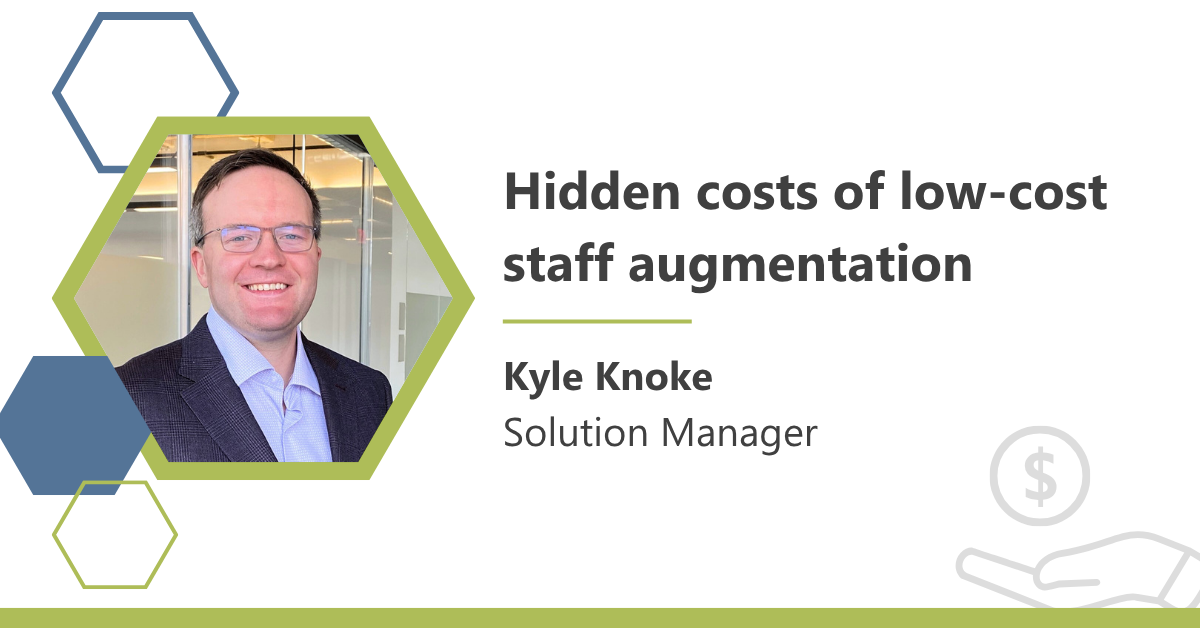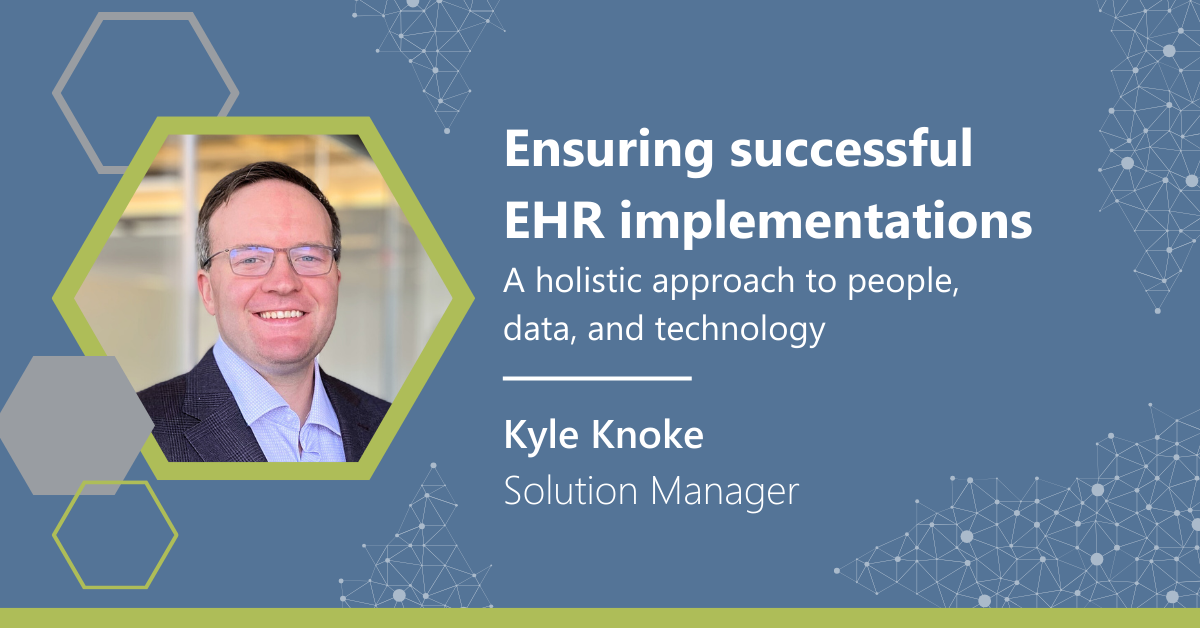 Embarking on a large EHR project, whether it's a new installation, instance consolidation, Refuel, or module rollout, demands a comprehensive organizational transformation anchored in robust governance and proactive change management. In fact, U.S. healthcare organizations cited insufficient change management as their top implementation challenge, surpassing concerns like inadequate training or technical problems. At the same time, as the KLAS Arch Collaborative EHR Implementations 2025 Report indicates, since 2022, customer satisfaction with EHR implementations has declined at more than twice the rate of any other metric in their standard health IT software evaluation. Their findings indicate that 40% of healthcare leaders report significant misses while another 22% note only average satisfaction.
Embarking on a large EHR project, whether it's a new installation, instance consolidation, Refuel, or module rollout, demands a comprehensive organizational transformation anchored in robust governance and proactive change management. In fact, U.S. healthcare organizations cited insufficient change management as their top implementation challenge, surpassing concerns like inadequate training or technical problems. At the same time, as the KLAS Arch Collaborative EHR Implementations 2025 Report indicates, since 2022, customer satisfaction with EHR implementations has declined at more than twice the rate of any other metric in their standard health IT software evaluation. Their findings indicate that 40% of healthcare leaders report significant misses while another 22% note only average satisfaction.
Of course, these large-scale projects require getting the technology side of things right — the right system build to support workflows, the right data flows between systems, and the right analytics. But technology is only part of the equation, as the soft, people side of these projects is a crucial element to success. Thoughtfully designed, comprehensive technology solutions will fall flat on their face without the right change management and training solutions. When launching these complex EHR projects, robust governance frameworks and proactive change management strategies should be layered in to mitigate risks, enhance user adoption, and drive strategic success.
The role of governance in EHR projects
Within health IT, governance can mean a variety of things. In this case, governance refers to the structured framework that ensures that your organization’s strategic objectives are reflected in the decisions, processes, and actions that deliver your IT projects. It is the proverbial backbone that coordinates people, processes, and technology to support both short-term project goals and long-term organizational transformation.
There are two ways to look at governance: centralized and decentralized.
- Centralized Governance:
In a centralized model, decision-making authority is consolidated within a single, unified structure. This structure ensures clear decision-making pathways, defined accountability, and streamlined escalation processes. For EHR projects, this approach provides the necessary framework to maintain focus and drive consistent, organization-wide outcomes. - Decentralized Governance:
A decentralized model distributes decision-making across multiple teams or departments. While this approach can offer flexibility and allow for localized decision-making, it can sometimes result in misaligned priorities and lack of accountability, making it challenging to maintain overall project organization.
Our experience has shown the centralized governance model to be the most effective for these types of projects. However, there must be thoughtful consideration on pushing decision-making to the right level of the structure with clear escalation paths to reduce bottlenecks.
The recipe for effective governance
Effective governance that is built on a carefully balanced mix of clear decision-making frameworks, robust escalation protocols, and active leadership engagement are the foundation of a successful EHR project. Each element plays an important role in ensuring that challenges are promptly addressed, accountability is maintained, and the overall implementation remains aligned with strategic objectives. Here are some of the ingredients for effective governance:
-
Decision-making frameworks: Establish clear guidelines on who makes decisions and when. Empower front-line users by delegating decisions to the lowest appropriate level, ensuring that those closest to the daily operations have a voice. Best-practice organizations create multiple levels of governance to guide the EHR journey. (See Figure 1.)
- Escalation protocols: When challenges arise, a well-defined escalation path and process ensures that issues are addressed promptly, preventing delays that can derail project momentum.
- Leadership engagement: Active involvement from top executives is crucial. Their commitment helps align the implementation with broader organizational strategy and drives accountability across all levels.

Change management: A catalyst for transformation
Organizations that integrate operations early into the project consistently achieve smoother transitions and more successful outcomes. We have seen that when operational teams are involved from the onset, staff are better prepared and aligned with the change, leading to higher adoption rates and fewer disruptions. On the flip side, organizations that delay engaging operations until later stages often face resistance, miscommunication, and avoidable setbacks. A recent KLAS survey highlighted that 57% of clinicians reported that they did not get adequate support during their implementation from their organization or IT departments.
“The 27% of organizations whose clinicians report an above-average EHR experience post-implementation were able to achieve this by providing the technological foundation needed to ensure fast system speed and seamless integration at go-live. They coupled this with careful management of the people and process changes that must accompany technology changes, ensuring that clinicians understood how to efficiently use the new EHR and providing the necessary governance and support structure.”
A proactive change management strategy ensures that staff and end users are not only prepared for the transition but are fully engaged and feel supported throughout the process, laying the groundwork for lasting success.
Tapping into a human-centered approach
Implementing EHRs involves significant changes to established workflows and practices. Resistance to change is common, so it’s important to consider an approach that revolves around the end users. This means:
- Engage stakeholders early: Involve end users in the planning process to capture their insights and address concerns before they become obstacles later down the line.
- Tailored training programs: Provide comprehensive, role-specific training that empowers users to confidently operate within the new system.
- Ongoing support: Offer continuous education and support tools — such as refresher courses, day-in-the-life labs, and on-site assistance — to ensure a smooth transition.
Communication strategies
Clear, transparent, and consistent communication is the key to successful change management initiatives. The right mix of communication channels — newsletters, town halls, and targeted communications — keeps stakeholders properly informed at the right times, fostering trust and reducing resistance.
Integrating governance and change management
Strong governance structures not only set the stage for decision-making but also support effective change management. By integrating these functions, organizations can more successfully:
- Leverage Epic’s foundation-first methodology: Use Epic’s standardized workflows as a starting point while incorporating change management strategies to customize processes that meet unique organizational needs.
- Facilitate alignment: Ensure that governance decisions reflect the feedback and concerns raised through change management channels, leading to a more agile and responsive implementation.
Common pitfalls and mitigation strategies
In any large-scale transformation, organizations can often encounter several obstacles, including misaligned priorities between different departments and facilities, insufficient stakeholder engagement leading to resistance, communication breakdowns that cause misunderstandings and delays, and confusion around who or what team has decision-making authority.
To overcome these challenges, organizations must have proactive stakeholder engagement, involving representatives from all levels early in the project to ensure diverse perspectives are incorporated. It’s also essential to have clear communication channels. Consider establishing dedicated communication pathways that provide regular updates and feedback loops. Developing structured escalation paths with clear, streamlined procedures will ensure that decisions are escalated efficiently and appropriately.
Leveraging external expertise and the role of consulting services
To overcome these obstacles, partnering with experienced EHR consultants like Cardamom can provide invaluable guidance in both governance and change management. These experts help strike the right balance between adhering to technical best practices and tailoring the system to meet unique operational needs.
A collaborative approach — blending internal leadership with external expertise — ensures that both governance and change management remain agile and responsive. This model fosters an environment where continuous improvement is not just an afterthought but an integral part of the operational strategy.
Successful EHR implementations extend beyond technical installations; they require a combination of strong governance and proactive change management. As healthcare organizations navigate the complexities of digital transformation, adopting an integrated approach ensures that technology, people, and processes work in tandem. With the right framework in place, EHR projects can become a catalyst for sustainable organizational growth, improved patient care, and operational excellence.
Contact us to learn how Cardamom can help you navigate your digital transformation.







